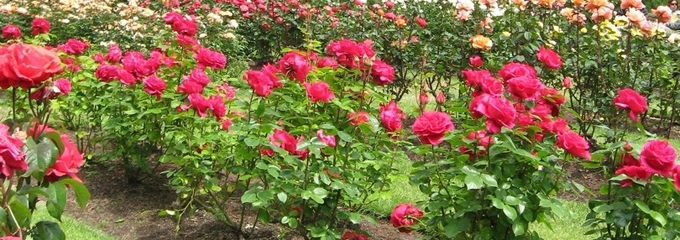Fun Facts
By about 1200 AD the first five groups of domesticated roses had already begun to evolve in cultivation: Albas, Centifolias, Damasks, Gallicas and Scots Roses.
The first guide to roses was written around 300 BC by Theophrastus, a pupil of Plato and Aristotle.
In France, from about 1820, that the deliberate and planned hybridizing of new roses from pre-selected plants began.
Until the early nineteenth century dried rose petals were believed to have mysterious powers.
Napoleon gave his officers bags of rose petals to boil in white wine to cure lead poisoning from bullet wounds.
It has been estimated that 150 million rose plants are purchased by gardeners worldwide every year.
Perhaps the oldest painting in the world is a cave painting that depicts a five-petaled pink rose. It resides in a cave on the island of Crete and dates to about 1450 B.C.
The world’s largest rose-bush is located in Tombstone, Arizona. It is almost two hundred years old and is adorned with more than two hundred thousand white blooms when in full bloom. Its trunk is nearly six feet in diameter, and its branches form a canopy large enough to shelter a crowd of 150 people.
The oldest living rose bush, which is now the size of tree, grows against a cathedral in Hildesheim, Germany. Documentation proves it has been there since A.D. 815.
Cleopatra (69 - 30 B.C.) celebrated the rose as an aphrodisiac; when she held a banquet in honor of her lover, Mark Anthony, in 42 B.C., the floor was carpeted with two feet of roses petals. Her bed was also covered with fresh roses daily, as were the beds of newlyweds in Roman times and rose wreaths were often hung by lovers on the doors of their beloved’s boudoirs.
